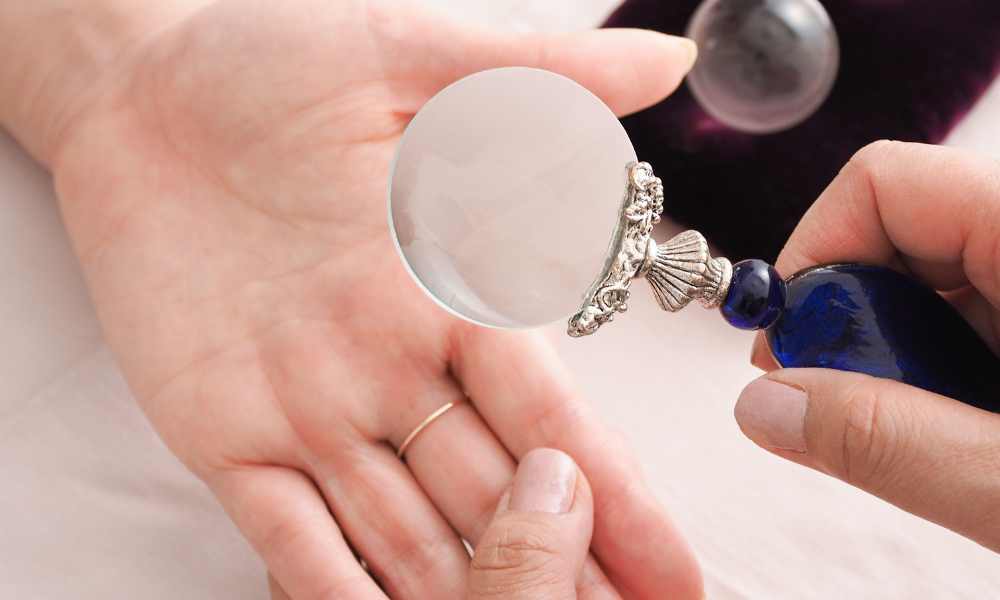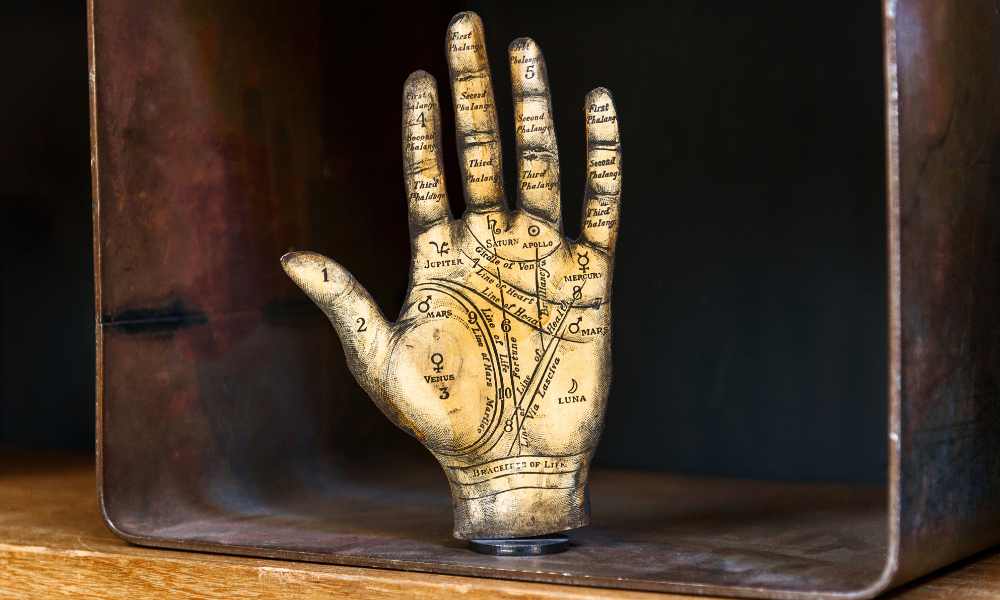
Where Did Palmistry Originate?
No known organized research has been conducted on the history of palmistry. Existing documents indicate that the subject originated in ancient India, although the exact era remains unknown. Many historians believe palmistry emerged in India a few thousand years BC, perhaps dating back 10,000 years.
The first documented evidence is the book The Teaching of Valmiki Maharshi of Male Palmistry, dating back more than 5,000 years. This book includes 567 stanzas relating to significant aspects of palmistry or hand reading.
Palmistry was the brainchild of the seers and sages of the times, who observed various phenomena that continued to occur in humans’ day-to-day lives. They tried to correlate these phenomena with the lines or symbols on the hand. After extensive observations of thousands of people over many years, they connected effects with types of lines found on the hand.

The ancient scripts in Purana, the mythological books of Hindu Sastra, state that the sage Nanda was one of the first practitioners of palmistry. Other practitioners include Hindu sages such as Gautama, Agastya, Kashyapa, and Ari.
The ancient books also mention Joshi, a very famous practitioner in India. The most eminent and popular name among the Hindu palmists was Maharsi Vrigu. Even today, he is well regarded by those in India as the best palmist among all others. Indeed, in ancient India, few important decisions were made without consulting a palmist.
The history of palmistry says from India, palmistry spread to China, Egypt, Tibet, the Persian Gulf and certain parts of Europe.
In China, the belief in palmistry became so deeply rooted that kings and monarchs made decisions related to the state only after consulting palmists. Much evidence supports this claim, some dating back to 3000 BC.
Greece was the first European country in which palmistry emerged. Many contemporary historians believe the art was either known or practiced by many eminent Greek figures, including Homer (800 BC), Anaxagoras (500 BC), Aristotle (300BC), Plato (400-300 BC), Hippocrates, Galen, and even Alexander the Great. The Greek physicians Hippocrates and Galen used palmistry as a clinical aid.
Some form of hand reading was practiced in ancient Rome as well. Julius Caesar (102-44 BC) believed in palmistry and used it to judge his men. In his book Naturalis Historia, the Roman scholar Pliny (23-97 AD) mentioned the idea that broken lines in the palm indicate a short life. Another writer, Juvenal (60-130 AD), mentioned the subject in his famous play Satires VI 581.
History of Palmistry and the Church

Although palmistry reached Europe from the East through traders, it did not spread within Europe until the 12th century as it was initially discouraged by the Catholic Church, which considered it a form of devil worship.
However, during the Middle Ages, when the influences of the Church relaxed and many scientific inventions started to occur, people started to think about palmistry from a logical point of view.
In the history of palmistry, we find the mention of palmistry in the book De Divisione Philosophiae (1160 AD) by Dominicus Gundissalinus. John of Salisbury (1115-1180 AD) also praised palmistry in Policraticus. The greatest palmist in Europe was Count Louis Hamon (1866-1936), more popularly known as Cheiro. He wrote several books on palmistry and predicted the future and character of many eminent personalities in Europe and other parts of the world.
Palmistry eventually spread to countries like Japan, Israel, and Babylon. However, as I previously stated, an organized study has yet to be conducted on the history of palmistry. As such, much remains to be discovered.
Author Bio - Jayanti Ghosh and Soumen Ghosh

Embark on a journey of numerological discovery with confidence, guided by our resident numerology experts, Jayanti Ghosh and Soumen Ghosh, recognized authorities in the field. Our content is meticulously curated, drawing from esteemed numerological texts and research. Rigorous fact-checking and peer reviews ensure the utmost accuracy and reliability. We are dedicated to transparently sharing the sources of our numerological knowledge, promoting a culture of trust and authenticity. You’re in the hands of a trusted expert, exploring the profound realm of pinnacle numbers with certainty.
Learn Palmistry

Lesson One
Palm, Fingers and Nails - Embarking on the journey of learning palmistry involves delving into the intricate details of the palm, fingers, and nails. As you explore the lines etched on the palm, decode the language of the fingers, and uncover the significance of nail characteristics, you unveil a wealth of insights into one's personality, potential challenges, and life path.

Lesson Two
The Lines of Palmistry - Learning palmistry opens a gateway to understanding the intricate lines that adorn the hands and wrists. These lines, such as the heart line, head line, and lifeline, unveil a narrative of one's personality, emotions, intellect, and life journey.

Lesson Three
Palmistry Hand Diagram - Delving into the art of palmistry involves a fascinating exploration of the mounts, the elevated areas on the palm associated with different planetary influences. Learning about these mounts unveils a wealth of information about an individual's strengths, weaknesses, and unique characteristics.

